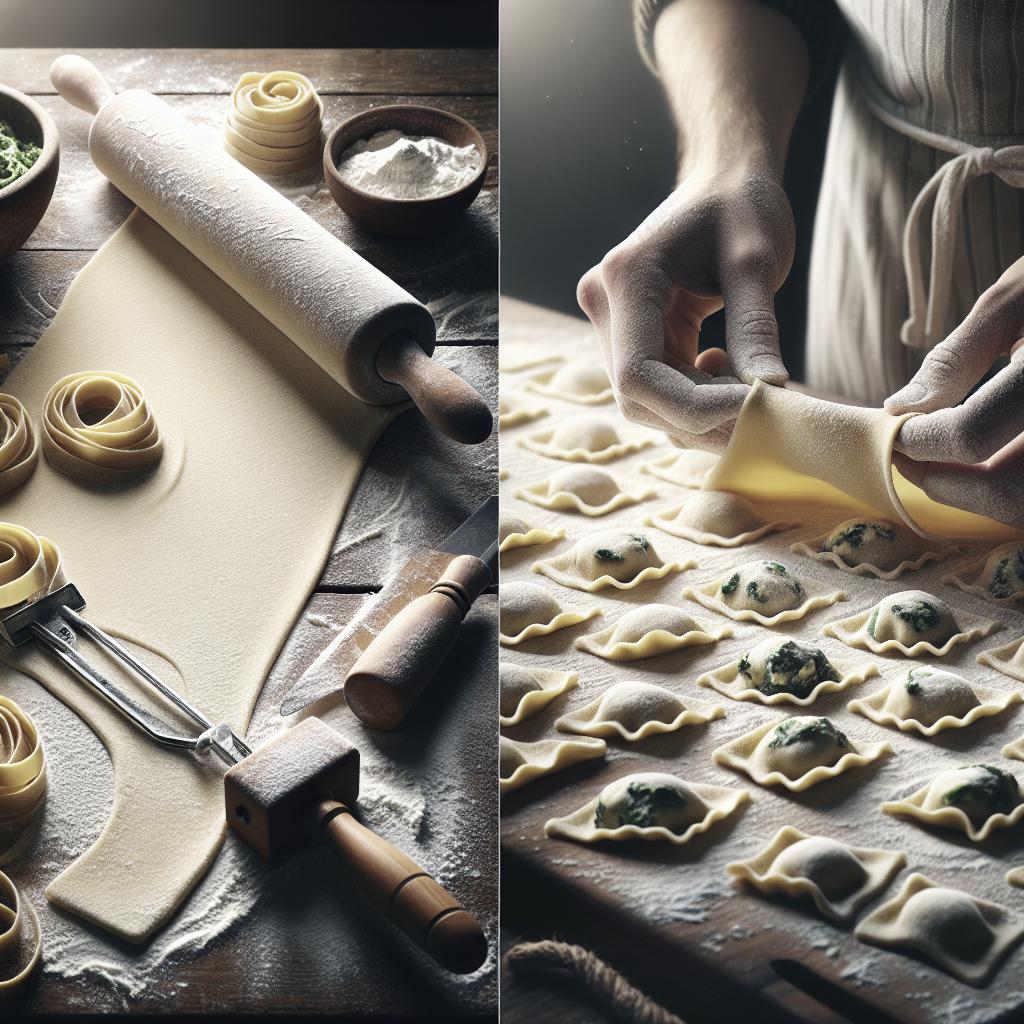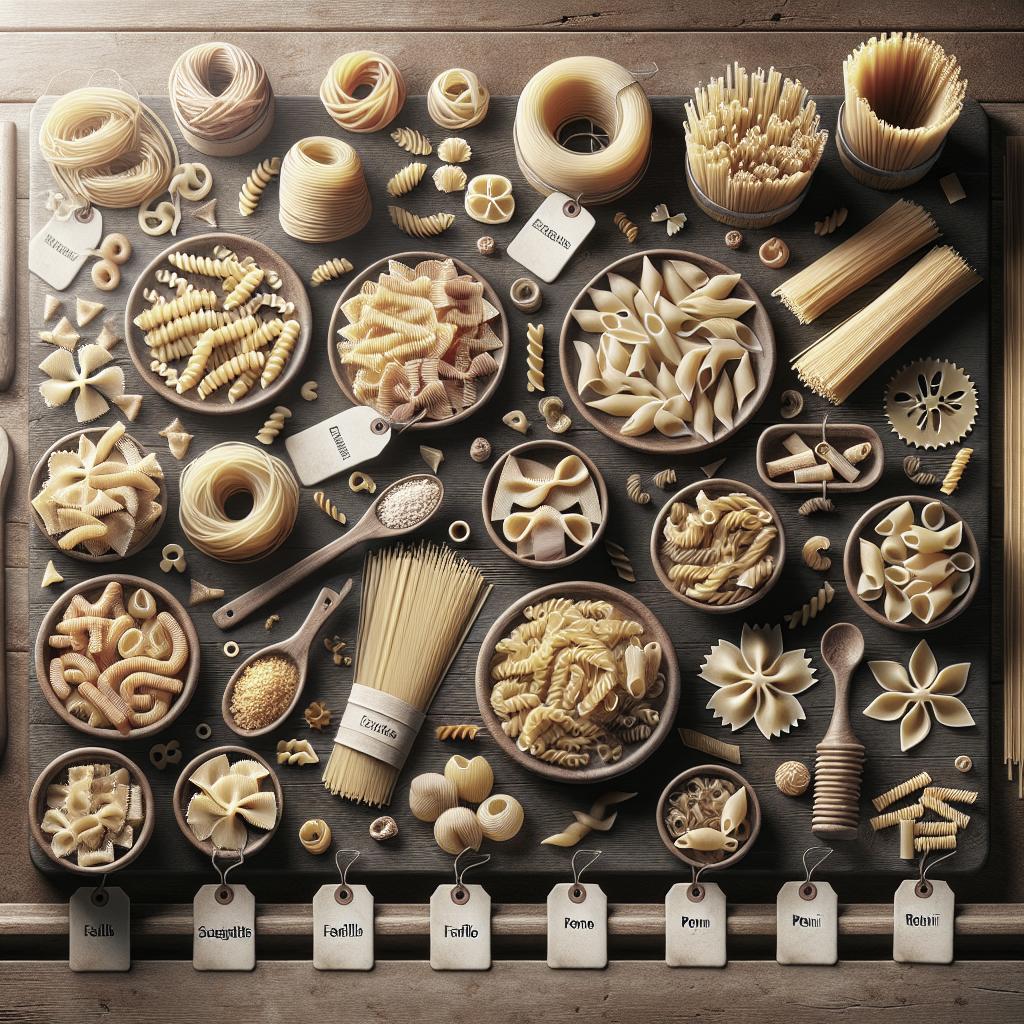“`html
How to Create Stuffed Pasta Like Ravioli
Creating stuffed pasta such as ravioli at home can be a rewarding and delightful experience. This versatile dish allows you to fill your pasta with endless combinations of ingredients, from classic cheese and spinach to innovative, modern takes. In this blog, we’ll guide you through the process step by step, from preparing the dough to crafting perfect fillings and assembling your ravioli like a pro. With the right tools, tips, and techniques, you can master homemade ravioli and impress family and friends with your culinary skills. Continue reading to discover how to make delicious ravioli from scratch, including storage, cooking advice, and sauce pairings.
How To Make Ravioli: What To Expect
Making ravioli is a culinary journey that requires patience, precision, and a little practice, but ultimately yields delicious results worth every effort. Expect an immersive experience starting from mixing and kneading the dough to forming each piece of ravioli. This guide has been designed to assist both beginners and seasoned cooks in refining their techniques and achieving the perfect stuffed pasta.
The process, though straightforward, involves multiple steps, including learning the intricacies of dough texture and mastering the art of ravioli construction. As with any new cooking adventure, a few trial-and-error sessions might be needed before achieving flawless results. Rest assured, every attempt enhances your skills in pasta creation.
Homemade Ravioli Ingredients & Tools (You Will Need):
The cornerstone of perfect ravioli is using quality ingredients and the right tools. Essential ingredients include all-purpose flour, eggs, olive oil, and salt for the pasta dough. Your chosen filling can be as simple as ricotta and spinach or as elaborate as mushroom and truffle essence.
To craft ravioli at home, vital tools include a rolling pin or pasta machine for even dough sheets, a knife or ravioli cutter, and a brush to seal the edges. Additionally, having a large pot for boiling and a slotted spoon for lifting cooked pasta is essential. Preparing your workstation with these items ensures a streamlined and efficient ravioli-making process.
Homemade Ravioli Tips
Before diving into the ravioli-making process, consider these tips for optimal results. First, a well-kneaded dough is crucial; aim for a texture that is smooth and elastic. Remember, letting the dough rest is essential to enable easier rolling and assembly.
When filling ravioli, less is more. Overstuffing can lead to tearing, so aim for a balanced amount that allows the edges to seal properly. Additionally, when sealing boxes, use water or beaten eggs to further adhere the dough, thus preventing the filling from escaping during cooking. Mastering these tips can elevate your ravioli to perfection.
Step #1: Make Pasta Dough
Start by creating the pasta dough, the foundation of great ravioli. Mix all-purpose flour and salt into a heap on a clean surface. Create a well in the center and add eggs and olive oil.
Using a fork, gently beat the eggs and gradually incorporate the flour, ensuring a smooth and cohesive dough forms. Once mixed, knead the dough by hand for about 8-10 minutes until it achieves a silky and elastic consistency. Cover and let it rest for at least 30 minutes to relax the gluten.
Step #2: Make Ravioli Filling
While the dough is resting, prepare your chosen filling. Classic options include ricotta cheese mixed with Parmesan, nutmeg, and spinach. However, feel free to get creative with your ingredients to vary flavor and texture.
Once you have prepared the filling, it generally helps to chill it for a few minutes as this firms the mixture, making it easier to handle when assembling your ravioli later.
Step #3: Roll Pasta Dough Into Sheets
Once the dough has rested, divide it into manageable portions. Using a pasta machine or rolling pin, roll the dough into thin sheets about 1/16-inch thick, ensuring even thickness to avoid chewy or undercooked sections.
Dust your workstation with flour to prevent sticking and handle the sheets gently to avoid tearing. This stage is essential to ensure seamless construction of the ravioli later on.
Step #4: Assemble & Cut Ravioli
Place spoons of filling along one sheet of pasta at regular intervals, leaving enough space for cutting and sealing. Lay a second sheet on top, aligning the edges.
Press down gently around each mound of filling to remove air pockets and create a seal. Cut out the ravioli with a knife or ravioli cutter, crimping the edges to secure the filling.
(Assembling Con’t.)
Continue assembling your ravioli, ensuring each piece is well sealed. At this point, you can focus on perfecting the sealed edges, preventing them from splitting open during cooking.
This task requires a careful touch and attention to detail, so take your time to ensure the best possible results. Perfectly sealed ravioli are key to preserving the delightful taste of the filling.
How to Store, Chill & Freeze Homemade Ravioli
If you aren’t cooking your ravioli immediately, you can store them in the refrigerator for up to a day on a floured surface, covered lightly with a cloth.
For longer storage, ravioli can be frozen in a single layer on a baking sheet before transferring them to an air-tight container or freezer bag. Proper storage prevents the ravioli from sticking together and maintains their quality until you’re ready to cook them.
How To Cook Homemade Ravioli
Bring a large pot of salted water to a gentle boil. Add your ravioli in batches, avoiding overcrowding the pot. Cook for about 2-4 minutes, or until they float to the surface.
Retrieve them using a slotted spoon, draining them well before serving with your chosen sauce. Homemade ravioli cook quickly, so maintain attention to prevent overcooking and maintain that perfect al dente texture.
My Sample Cooking Timeline
A good strategy to streamline the process is to organize it in stages. Start with making the dough and letting it rest. Use resting time to prepare your filling. Next, roll out your sheets, and finally, assemble the ravioli.
This timeline permits an efficient workflow and minimizes downtime, ensuring a pleasurable expereince throughout your homemade ravioli making adventure.
What About the Pasta Scraps?
Leftover pasta scraps can be rerolled and used to make additional ravioli or pasta. If the scraps become too dry or tough to work with, set them aside to dry completely and use them in soups.
This ensures no wastage, allowing you to leverage every piece of dough efficiently. Reimagining pasta scraps can also lead to unexpected culinary discoveries.
Best Sauces For Homemade Ravioli
The sauce you choose enhances the flavor of your ravioli. For cheese-based fillings, a simple sage brown butter or marinara complements well, while mushroom fillings pair excellently with creamy Alfredo.
Pesto, rich tomato basil, or simple olive oil with garlic equally heighten the taste without overshadowing the ravioli’s flavor. Pair your sauce with the filling to balance tastes exquisitely.
More Fresh Homemade Pasta & Ravioli Recipes to Try!
Once you’ve mastered classic ravioli, explore variations such as beet-filled ravioli with goat cheese or pumpkin ravioli for a seasonal twist. Experimentation is key to unlocking a myriad of delightful tastes in pasta dishes.
Equally, consider broadening your fresh pasta repertoire with other types like pappardelle, tortellini, or lasagna, utilizing your newfound skills in dough making.
Watch The Video:
For visual support, watch instructional videos showcasing expert tips and demonstrating each step of the ravioli-making process. This can be helpful for addressing uncertainties and fine-tuning your technique.
Visual aids are invaluable tools that provide deeper insights and additional comfort as you undertake your homemade ravioli journey.
Beginner’s Guide to Fresh Homemade Ravioli
Description
If you’re new to making pasta at home, start simple with basic recipes for ravioli and expand your skills as you gain more confidence. This guide acts as a primer for crafting delicious homemade stuffed pasta.
Ingredients
You’ll need all-purpose flour, eggs, salt, ricotta cheese, Parmesan cheese, nutmeg, and a choice of spinach or other fresh veggies for the filling. Prepare key ingredients beforehand and assemble tools needed to make the cooking process swift and strategic.
Instructions
Begin with dough preparation as described earlier, followed by cooling. While the dough rests, assemble your filling ingredients and set aside. Work methodically through rolling, filling, and sealing the ravioli before cooking them according to the directions given.
Did you make this recipe?
We would love to see your creations! Share your own ravioli-making journey and connect with others experimenting with homemade pasta. Join the community and exchange tips, insights, and recipe variations that align with your pasta-making passions.
Lessons Learned
| Step | Description |
|---|---|
| Prepare Dough | Create a smooth, elastic dough by mixing flour, eggs, and olive oil. |
| Prepare Fillings | Choose creative fillings and prepare them for use. |
| Assemble Ravioli | Use proper technique to fill, seal, and cut ravioli. |
| Storage | Properly store excess ravioli by refrigerating or freezing. |
| Cook & Serve | Cook ravioli and pair with complementary sauces. |
“`


